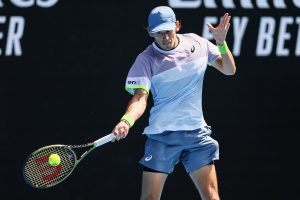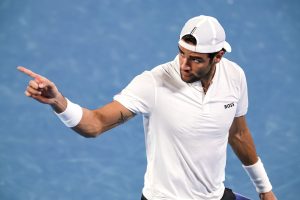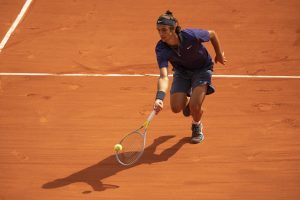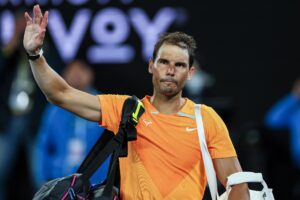World #3 Rafael Nadal is set to start his U.S. Harcourt swing at the Citi Open in Washington, where he will play the winner of Jack Sock and Yoshihito Nishioka. The Spaniard was last seen at the French Open semifinals, where he lost a dramatic and intense four-set match against the eventual champion, Novak Djokovic. Following his shocking loss, Nadal then pulled out of Wimbledon and the Tokyo Olympics, citing that his body needed more rest.
Nadal has been drawn into tricky road of possible opponents such as Cameron Norrie and Grigor Dimitrov. The Spaniard has also entered to the play the Cincinnati and Toronto Masters tournaments before the US Open. Nadal was attempting to break the record for most Majors won, but had failed to convert earlier in Paris. He’ll try to break the most unique tie in men’s tennis, where the top three (Roger Federer, Djokovic, and Nadal) are tied at 20 Majors.
Key Points for Rafael Nadal
So, what are the keys to a successful hard court season for Nadal? First, Nadal will have to be more consistent on his service games, which has been his achilles heel throughout the entire season. If Nadal is able to hold his service games without extra effort, he can use that energy to put pressure on his opponent’s serve. Since the hard courts play much faster than clay, having a strong and consistent serve is especially important.
If Nadal can improve his consistency, he should try to add more power to his serves, which will give him more opportunities for free points. This strategy has worked well for Nadal in the past, such as during the 2010 US Open, when his serve was averaging very high. It was almost consistently hitting the upper 110s and 120s. He even at some times was serving in the 130s, which is one of reasons he was able to dictate and dominate points leading to his first US Open title.
Backhand
Second, Nadal has to work on using his backhand more effectively. Nadal’s backhand is an overshadowed shot in his repertoire, and has evolved and improved significantly over time. It’s important that the Spaniard uses his backhand not to set up long rallies, but to end points or set up a winner. Flattening his backhand will help him gain more depth and take time away from his opponents. It’s possible that having a flatter backhand will lead to a lack of consistency at first, but it can be extremely rewarding in critical moments. The advantage is that Nadal will have a couple of warm-up tournaments before New York, giving him the opportunity to try out some new strategies.
Strategy
Finally, Nadal will need to work on shortening points and avoiding undue physical exertion. Nadal has long been known for grinding down his opponents, but he isn’t getting any younger. Using the same strategy, he’s injured himself numerous times. It’s essential for Nadal to realize that he will need to add a more tactical approach to his game. If he does, he will have shorter matches and points which will help him in the deeper stages of tournaments where energy is a key factor. On the court, a more tactical Rafael Nadal would be an interesting sight to see, but it would ultimately help him extend his career and increase his chances of winning more Grand Slams.
Main Photo from Getty.






